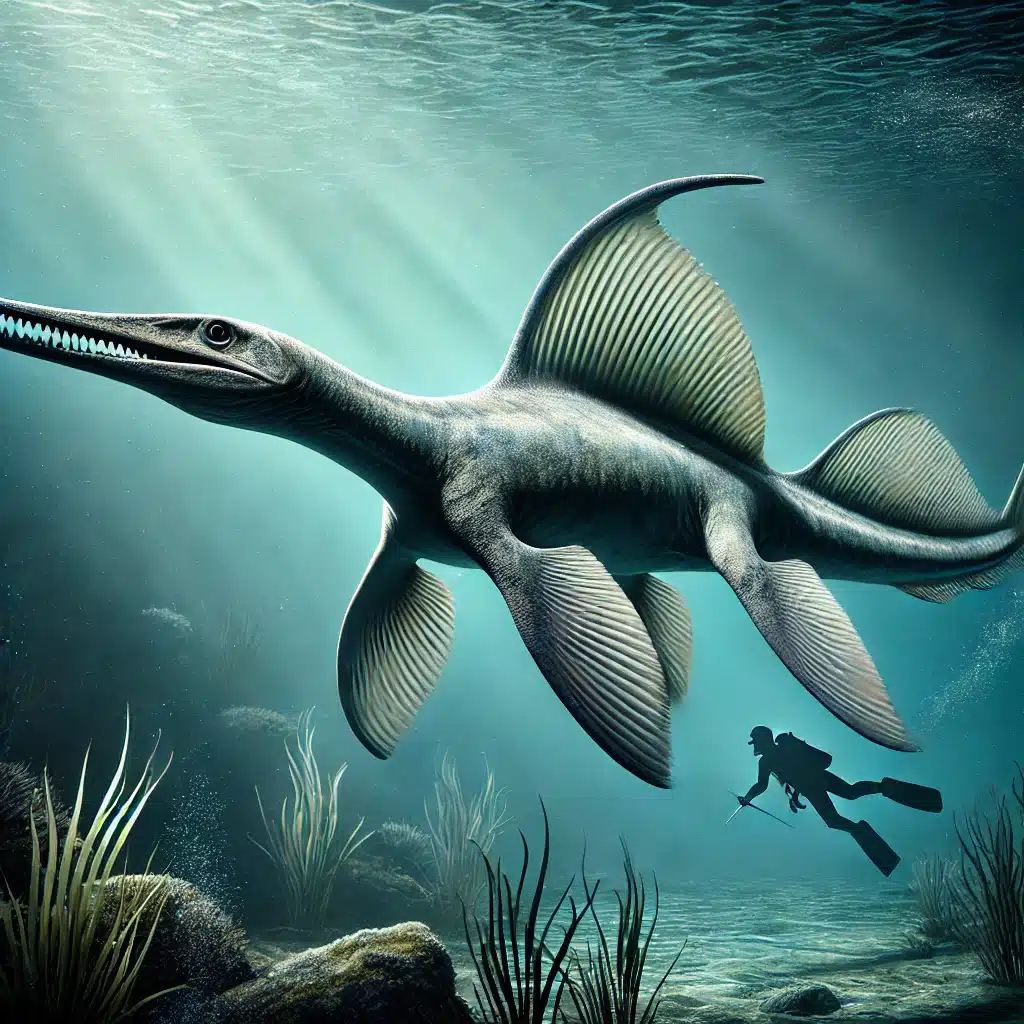Have you ever imagined what it would be like to dive into the waters of the past and observe a marine predator agile as an eel and powerful as a tuna? besanosaurs are extraordinary examples of these prehistoric creatures that swam in the seas 240 million years ago. These large marine reptiles, belonging to the group of ichthyosaurs, were masters in the art of swimming, thanks to an ability that allowed them to make sudden changes in direction to catch very fast prey.
The findings of the international study
Imagine finding them in the sea of the Mesozoic era: their long, thin fins, combined with a spine composed of over 200 vertebrae, gave them an almost eel-like appearance, perfect for moving agilely through the waves. But how did researchers discover all these details about these ancient swimmers?
Recently, a study published in the Swiss Journal of Paleontology has revealed fascinating details about besanosaurs, thanks to an international team of paleontologists, including Cristiano Dal Sasso and Gabriele Bindellini. Using the CT scan provided by the Fondazione Irccs Cà Granda Ospedale Maggiore Policlinico di Milano, the researchers have reconstructed in 3D the skeleton of the Italian besanosaurus, discovered in Besano in 1993 and now preserved at the Natural History Museum of Milan.
A unique body structure
This reconstruction showed that besanosaurs possessed a unique body structure: The front flippers, long and made of rounded bones and cartilaginous tissue, were very similar to those of modern killer whales, while the rear flippers were made up of four fingers close together to create rigid paddles that acted like rudders. This combination of different flippers was essential for exceptional maneuverability.

Dal Sasso emphasizes that “the front and rear fins are completely different: if they were not attached to the same body, no one would believe that they belong to a single species.” Furthermore, the besanosaur did not have a straight tail, but an asymmetrical sickle-shaped tail, with an upper lobe much shorter than the lower lobe. This particular conformation had a function hydrodynamics crucial, allowing the besanosaur to maneuver and quickly change direction to chase fast-moving prey such as squid and open-sea fish.
Imagine being a small fish in the prehistoric sea, and suddenly being chased by such a fast and agile creature. The speed and hunting efficiency of besanosaurs were superior to those of other contemporary ichthyosaur species, making them truly successful marine predators.
Find out more and stay updated
If you are fascinated by the wonders of the past and want to discover more about how these incredible creatures swam in the prehistoric seas, don’t miss the latest paleontological discoveries! Let yourself be carried away by the history and discoveries that allow us to better understand our past. Keep following us on iCrewPlay for more fascinating explorations into the world of paleontology and beyond!
#Fun #Facts #Besanosaurs #Marine #Predators
